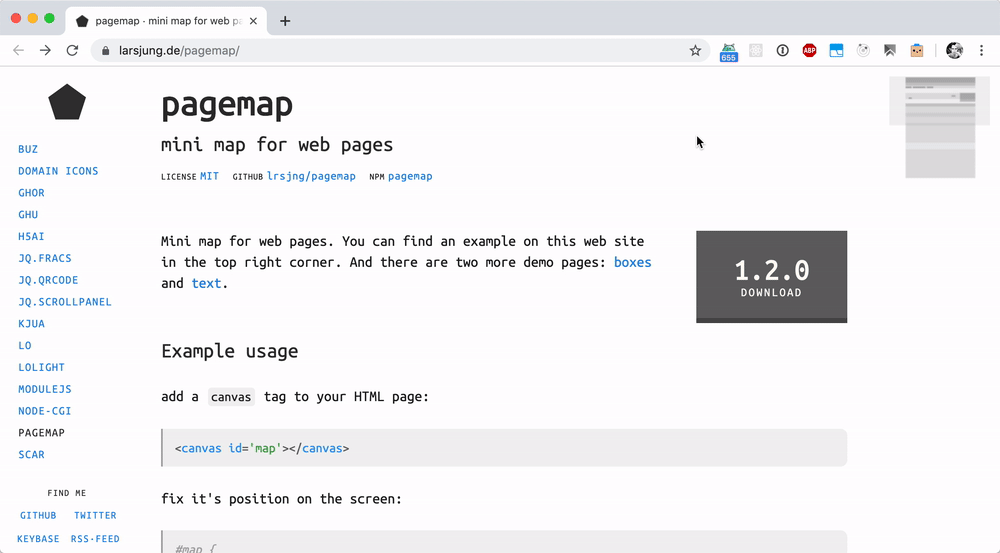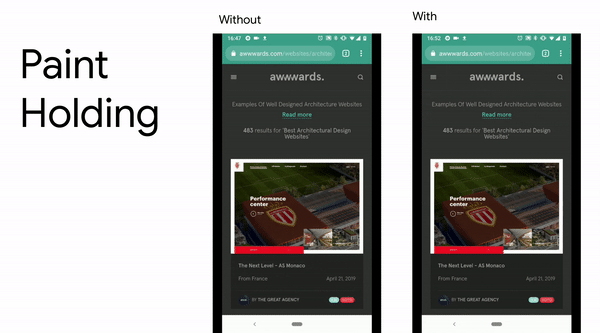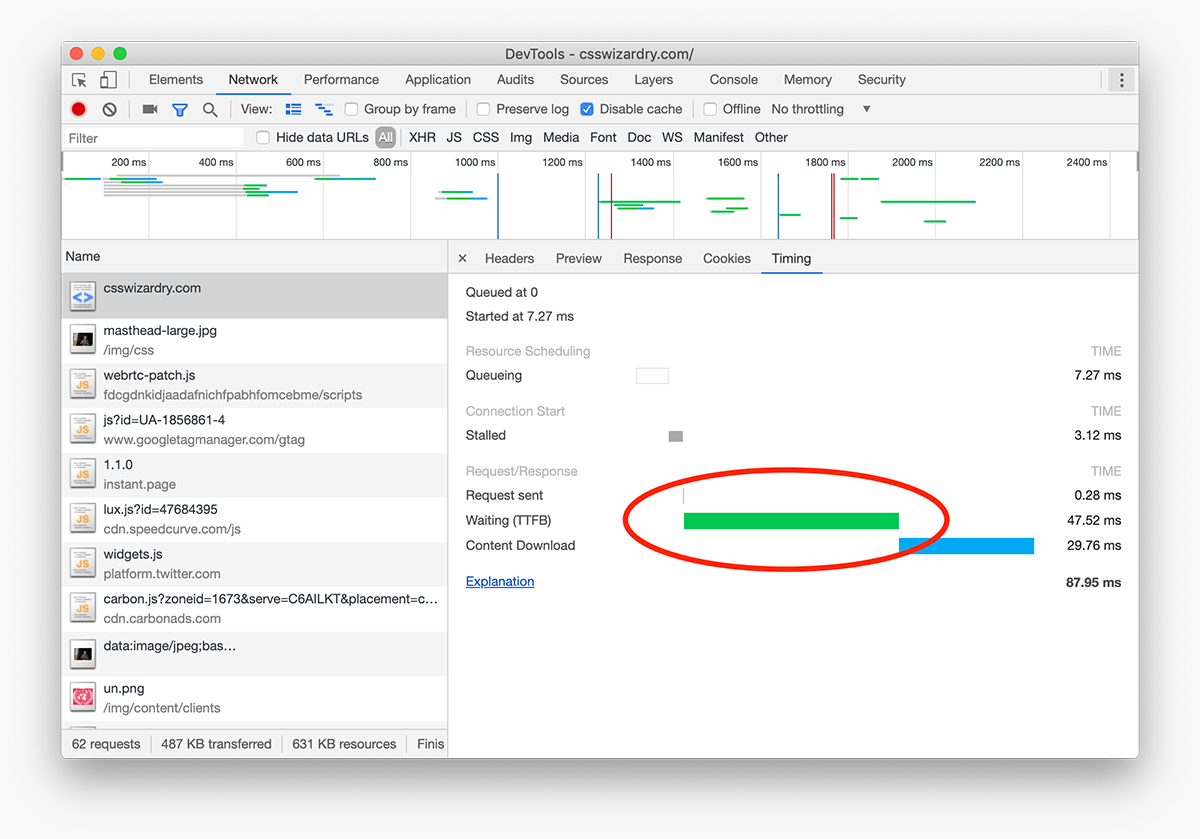
Many text editors nowadays sport a minimap on the right hand side of the screen. Pagemap is like that, but for webpages: To use it, position a canvas element fixed on your screen, and tell pagemap which elements to include in the map: <canvas id="map"></canvas> #map { position: fixed; top: 0; right: 0; width: 200px; …
Continue reading “pagemap, a mini map navigation for web pages”

